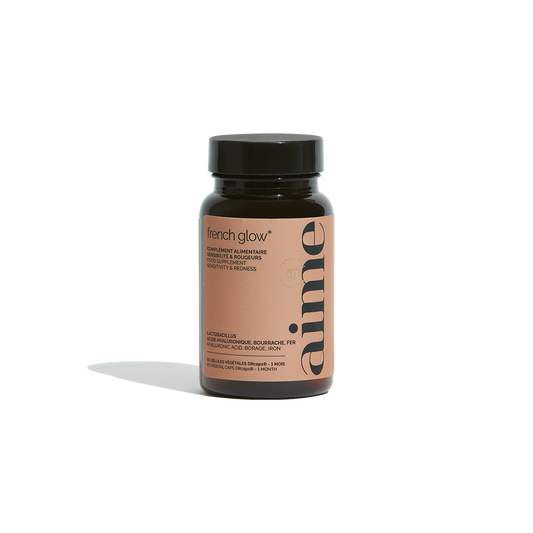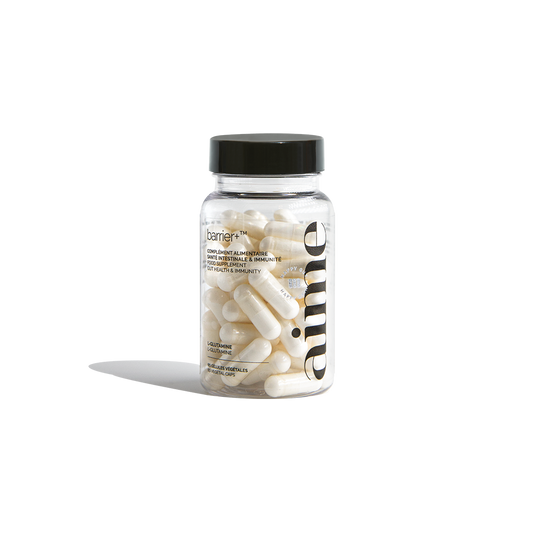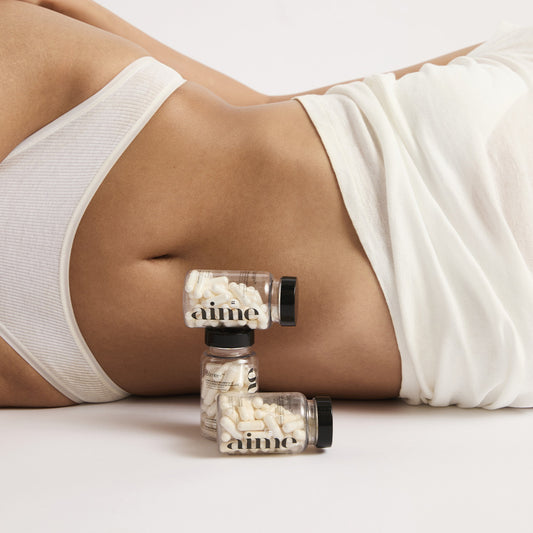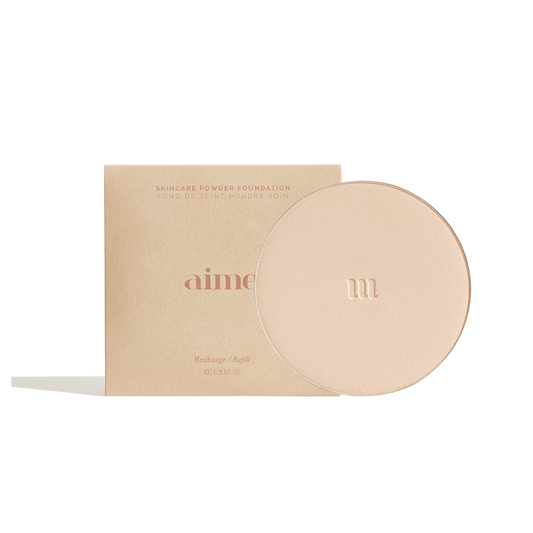Rosacea and inflammation: what is the link?
Rosacea is a chronic inflammatory skin disease, often localized on the face (cheeks, nose, forehead, chin). It manifests itself by diffuse redness , feelings of heating, small visible vessels or even outbreaks of inflamed spots.
According to Claire Borwin, dietitian-nutritionist and Aime expert, it's essential to look beyond the skin to better understand what's going on:
“ Many people with rosacea also experience intestinal imbalance. A weakened microbiota or a permeable intestinal barrier can maintain inflammation, which is then expressed on the skin. ”
In short? When the intestinal barrier is weakened, toxins or poorly digested molecules can enter the bloodstream, maintain inflammation and... appear on the skin. This is the famous gut-skin axis: the state of our intestinal flora and the quality of our digestion can influence the health and balance of the skin.
Foods to avoid with rosacea
Everyone's skin reacts differently, but certain foods are commonly identified as triggers for flare-ups or redness. The best thing to do is identify them, test them, and observe them. Here are the most common:
- Alcohol, especially red wine, is known to cause hot flashes,
- Very hot drinks (coffee, black tea) which promote the dilation of blood vessels
- Spicy foods, often responsible for vasodilation phenomena
- Dairy products from mammals, sometimes poorly tolerated
- Gluten, which can promote intestinal hyperpermeability in some people
- Refined sugar, pro-inflammatory by nature
- Tomatoes, strawberries and citrus fruits, rich in histamine which promotes certain inflammatory mechanisms and favors the appearance of rosacea symptoms
Claire's advice: " This isn't a list of forbidden foods, but rather a basis for getting to know yourself better. Keeping a food diary for a few weeks can help you identify what triggers redness or flare-ups. "
Foods to favor to soothe the skin
Good news: diet can also be a valuable ally in calming rosacea. Here are the main categories to favor:
- Green vegetables and red fruits, rich in antioxidants and polyphenols
- Foods rich in omega-3: oily fish (sardines, mackerel), flax or chia seeds
- Fermented foods (raw sauerkraut, kefir, miso) to pamper the microbiota
- Homemade broths, rich in collagen and glutamine
- Mild anti-inflammatory spices, such as turmeric (with black pepper) or ginger
In short, focus on a simple, natural, unprocessed diet, with a maximum of raw and fresh products.
Food supplements that make the difference
Certain situations (prolonged stress, digestive fatigue, inflammatory conditions) may require a helping hand.
French Glow, our flagship treatment for skin prone to redness and inflammatory imperfections, combines probiotics, borage oil, hyaluronic acid and alpha lipoic acid to act on both the balance of the intestinal microbiota and the regulation of skin inflammation.
The right move to boost the effectiveness of your treatment? Combine taking French Glow with L-glutamine supplementation, a key amino acid for restoring, strengthening, and preserving the intestinal barrier. By limiting intestinal porosity, it improves nutrient absorption and prepares the body to get the most out of each formula. The result: increased effectiveness, brighter skin, and longer-lasting well-being.










